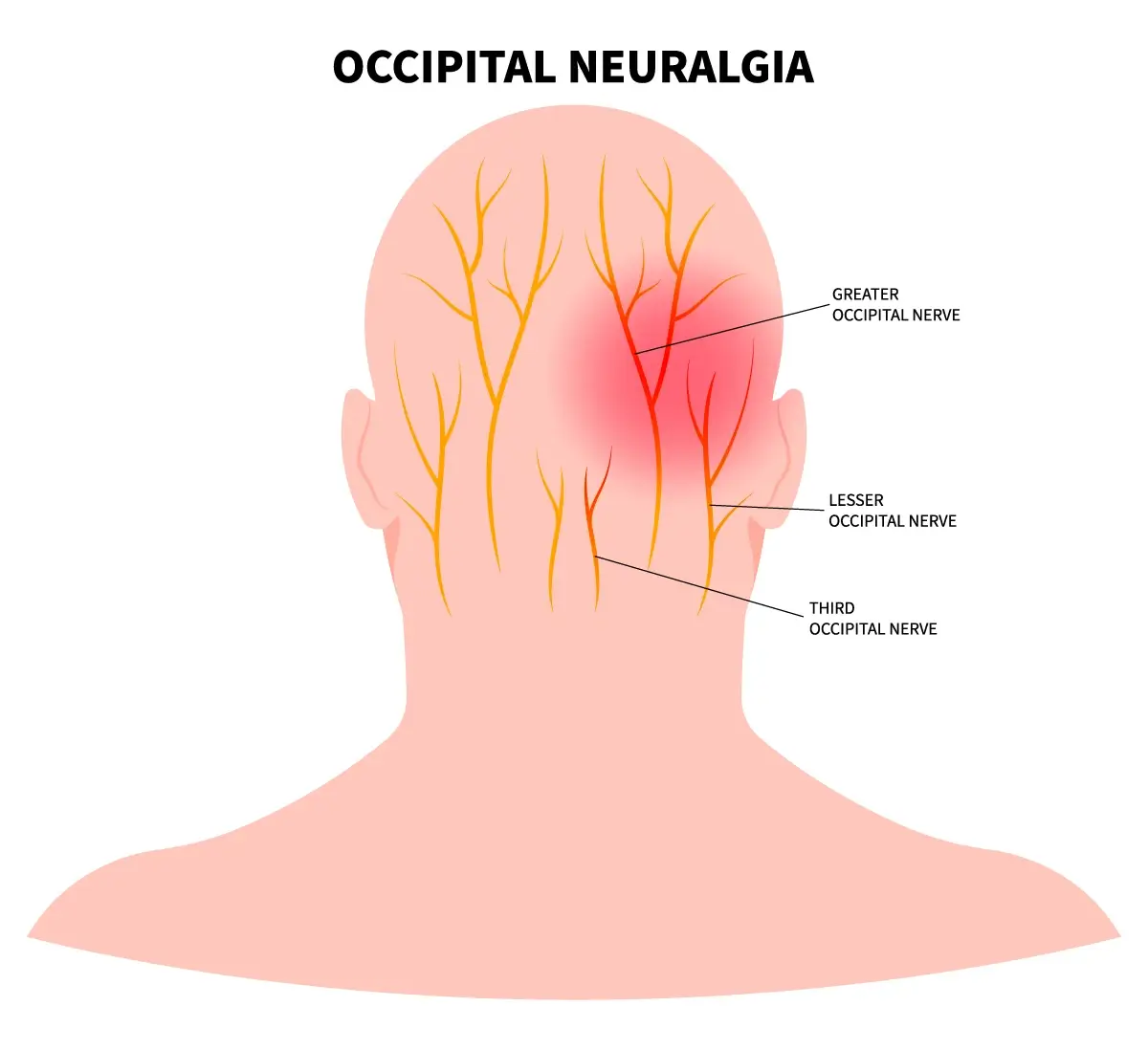Occipital neuralgia
Find a neuro specialistDo you ever experience a sharp, throbbing pain at the back of your head? You might be dealing with an uncommon headache disorder called occipital neuralgia. This type of headache originates from the occipital region at the base of the skull and radiates along the occipital nerves that run from the spinal cord to the scalp.
Occipital neuralgia differs from other types of headaches because it can be classified as a primary or secondary headache, which means it can be a standalone condition or a symptom of an underlying illness.
The good news is there are various treatment options available to effectively alleviate the symptoms and discomfort associated with occipital neuralgia, especially when the root cause is addressed.
Although occipital neuralgia isn't life-threatening, the pain intensity can be debilitating. If you're experiencing persistent headaches in the back of your head, seeking medical attention can help you find relief.
What does occipital neuralgia feel like?

Occipital neuralgia often feels like a sharp, shooting pain localized at the back of the head, typically affecting one side. People may describe it as a throbbing or burning sensation.
Additionally, sensitivity to light, scalp tenderness and pain behind the eye on the affected side are common accompanying symptoms. Pain may also be felt at the base of the skull or behind the ear.
One notable difference from other types of headaches such as a migraine is the sudden intensity of occipital neuralgia. Triggers can be as small as brushing your hair. Despite the intensity of the pain, episodes are typically brief, lasting only a few seconds to a couple of minutes, before going away.
This differs from migraines, which, while also severe, tend to persist for longer periods of time.
What causes occipital neuralgia?
Occipital neuralgia frequently arises from either compressed nerves at the base of the neck or tense neck muscles. Additionally, head or neck injuries can contribute to an episode.
Occipital neuralgia also can be a secondary headache disorder, meaning there’s an underlying condition. Several conditions may trigger or make occipital neuralgia worse including:
- Arteriovenous malformation (AVM)
- Brain aneurysm
- Brain tumor
- Gout
- Infections
- Meningitis
- Osteoarthritis
- Rheumatoid arthritis
- Sinusitis (inflammation of sinuses)
- Sleep disorders
- Stroke
- Trigeminal neuralgia
How is occipital neuralgia diagnosed?
During your consultation with your doctor, your provider will conduct a thorough physical examination. They'll inquire about your medical history, including the duration and nature of your symptoms, particularly any pain experienced at the back of your head.
As part of the assessment, your doctor may apply gentle pressure to the affected area to see how you respond and check for pain in that area.
To investigate potential underlying causes or to eliminate other conditions, your provider may recommend imaging tests such as an MRI or a CT scan. These diagnostic tools provide detailed images of your spine, helping to identify and assess any abnormalities or contributing factors related to your symptoms.
How do you get rid of occipital neuralgia pain?
In many instances, your provider may suggest at-home remedies to manage occipital neuralgia pain. These may include applying a warm compress to the affected area and taking over-the-counter anti-inflammatory medications like ibuprofen or naproxen to alleviate discomfort. If these don’t work, your doctor might prescribe muscle relaxers to address muscle tension contributing to the compression of the occipital nerves.
Should more conventional treatments fail to provide relief, your doctor may propose a local anesthetic injection into the occipital area. This procedure can offer immediate relief from symptoms, and the effects of the anesthetic can last for several hours.
An occipital nerve block may give temporary relief for certain headache disorders, such as occipital neuralgia. The effectiveness of nerve blocks varies from person to person, so discuss this treatment option with your doctor to see if it’s right for you.
In rare scenarios where other solutions don’t work, surgical intervention may be considered. Surgery aims to alleviate pressure on affected nerves, particularly if underlying conditions like rheumatoid arthritis or osteoarthritis are contributing factors.
Get care
We help you live well. And we’re here for you in person and online.